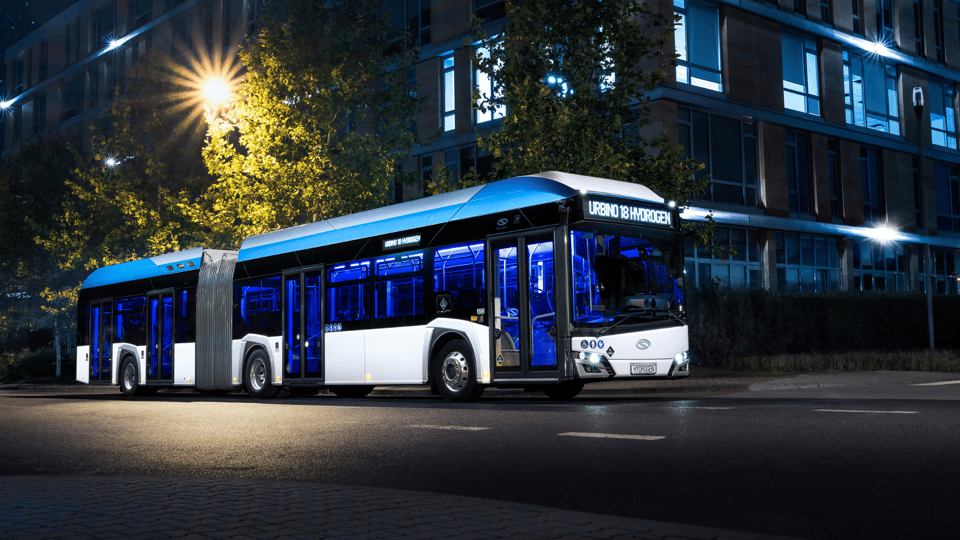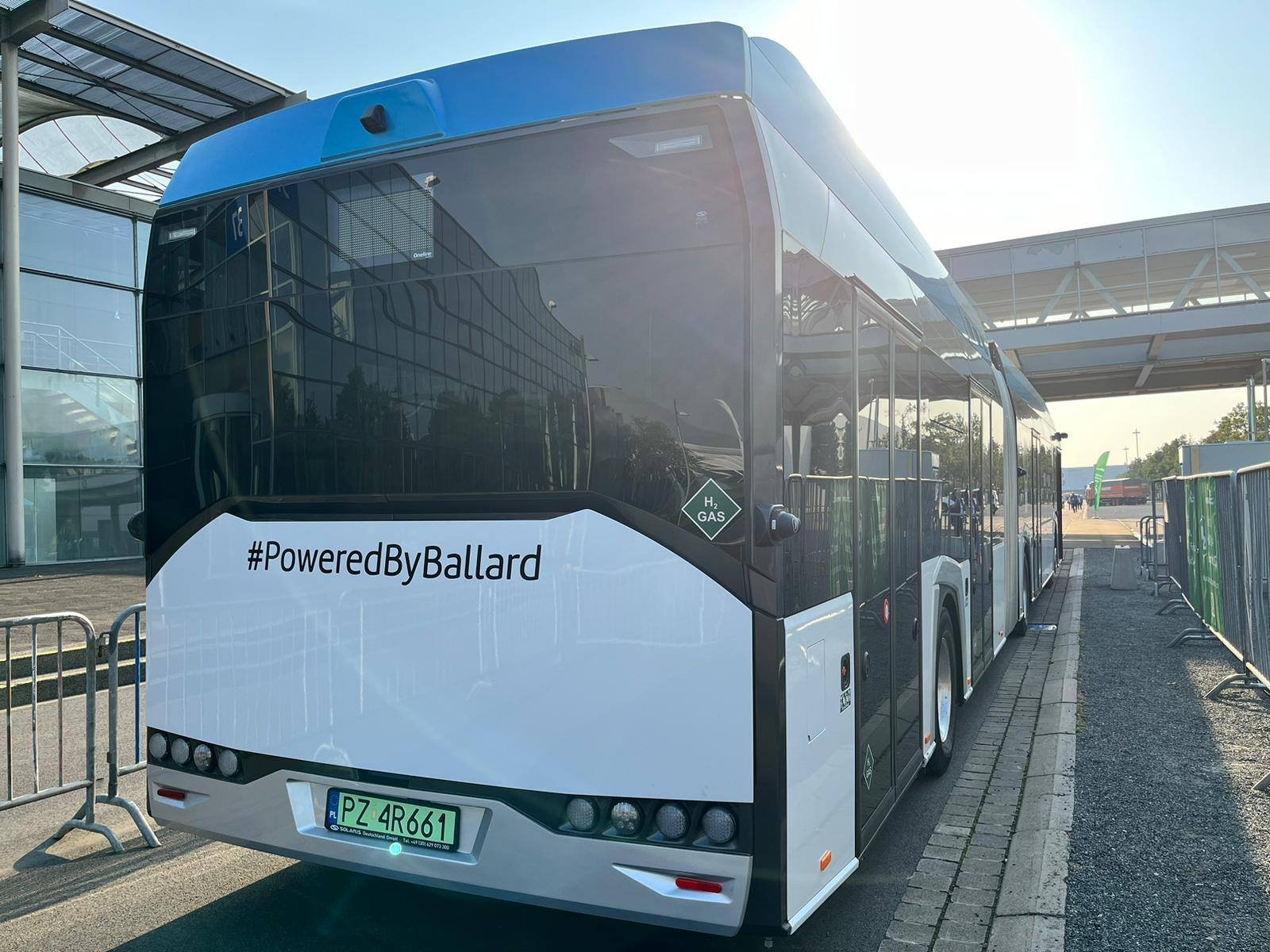
The Solaris Urbino 18 hydrogen has won Bus of the Year for 2025. Powered by Ballard, the fuel cell bus was given the prize – following extensive examination by an international expert jury – at IAA TRANSPORTATION 2024 in Hannover, Germany on September 16.
The industry panel was swayed by the numerous advantages offered by hydrogen, including longer range, shorter refueling time, and no harmful emissions. The prestigious Bus of the Year award has been running since 1989, and although this is the second time Solaris has been recognized, the Urbino 18 hydrogen's win represents the first instance in which a zero-emission hydrogen-powered vehicle has won the award.
[Footage courtesy of Solaris]
Integrated with Ballard's FCmove®-HD+ 100kW fuel cell engine, Solaris's model was utilized as a shuttle bus for visitors at the IAA tradeshow in Hannover, with passengers commenting on the smooth, comfortable and quiet journeys they took onboard the bus.
Solaris currently has more than 260 hydrogen-powered buses on public transit routes across Europe, with a further 600 planned for operation soon. Each bus is powered by Ballard's fuel cell technology.
The Urbino 18 hydrogen competed for the Bus of the Year title in May as part of the Bus Euro Test, which is where the industry judges adjudicated on the field.
This year's edition took place in Kladno, the Czech Republic, where five vehicles - including models from MAN, Mercedes-Benz, VDL and Ebusco - underwent several days of comparative testing which involved evaluations on factors including acceleration, braking distance, vibration and noise levels.
Featuring an unconventional engine compartment, the fuel cell bus has been equipped with a modular drive system with components placed on the roof and in the rear of the vehicle. The solution maximizes passenger capacity, facilitates servicing, and provides flexibility when it comes to roof arrangement options.
Thanks to the hydrogen technology applied and an increased number of new, light hydrogen tanks with a total capacity of 51.2 kg, the bus performs excellently on longer routes. It can cover 600 km on a single refill, while maintaining all the qualities of an electric drive (based on energy consumption in e-SORT 2 tests). Full refueling of the vehicle takes around 20 minutes.
Depending on the configuration, the bus can carry up to 140 passengers.

The Urbino 18 competed for the Bus of the Year title in May as part of the Bus Euro Test, which is where the industry judges adjudicated on the field. It took place in Kladno, the Czech Republic, where five vehicles - including models from MAN, Mercedes-Benz, VDL and Ebusco - underwent several days of comparative testing which involved evaluations on factors including acceleration, braking distance, vibration and noise levels.